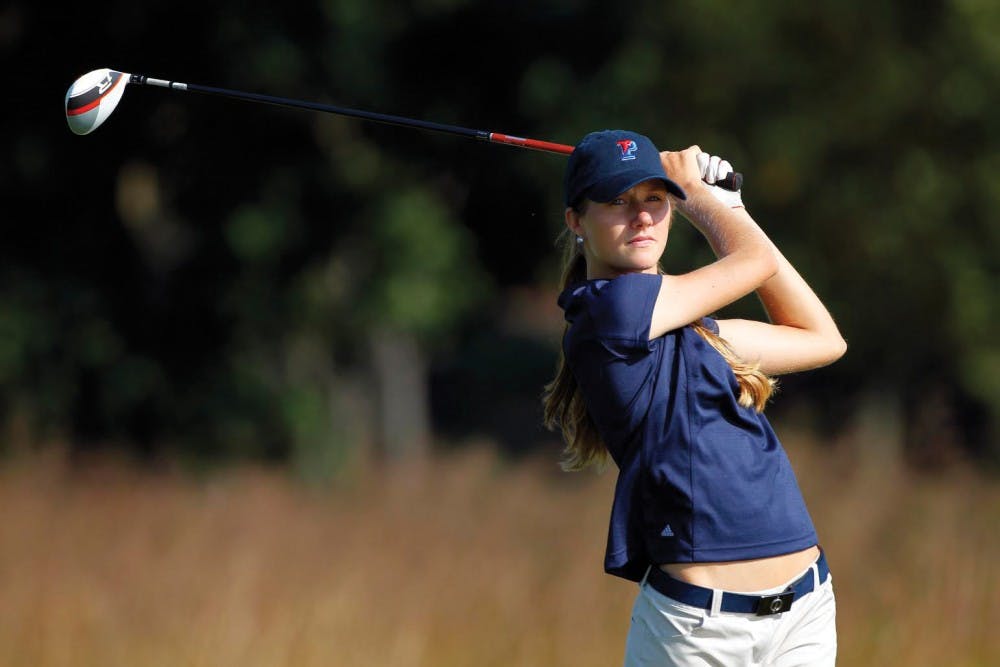
For most Penn athletes, practices are simple. The players go to facilities that are on or right off of campus that present game-like conditions for them to practice in. They put in a couple hours of work, and then they are right back as on campus as students.
But that is not the case for the men’s and women’s golf teams.
Unlike other Penn sports teams, the golf teams do not have a course that they can practice on located on or very near campus. The course that they do use, the Philadelphia Cricket Club — albeit one of the nicest courses in the Philly area — is nearly 20 miles away, around a half-hour drive in each direction. This leaves the teams and the players with extra time spent on their sport for the three or four days a week that they practice at the course.
“We have to drive 25-30 minutes both ways, and this just adds a little more time to the day,” women’s coach Mark Anderson said. “We get there and try to be as efficient as possible with our time.”
Another problem that the Quakers run into is the length of their practices. Because NCAA rules dictate that teams cannot practice for longer than four hours a day, the golf teams often struggle to complete a full round during their practices. Because of this, the teams often have to adopt other methods of practice.
“18-hole practices are tougher to squeeze in because we are only supposed to be there for four hours, so we normally reserve them for Fridays or Saturdays when we are preparing for tournaments,” men’s coach Bob Heintz said. “Other days we do an hour long warm up and play nine holes or work on drills for ball striking, chipping and putting.”
The golf teams are also in a unique position because they have a resource that many teams here at Penn do not: the golf simulator. Located on the third floor of Pottruck, the golf simulator has a medium-sized putting green that can fit a couple of people at a time and simulation bays that can hold up to 10 people.
“We use TrackMan [with the simulator], which is a radar system that tracks club and the ball. Through the TrackMan there are a bunch of tests that show what they need to work on,” Anderson said.
These simulations provide the team with a plethora of data that allows them to pinpoint weak spots and better their game.
“It is much easier to get accurate video of the swing because the cameras are mounted on the wall and not held by hand,” Heintz said. “The simulator gives us lots of different types of data, from launch data to ball spin rate to club path to attack angle and much more.”
In addition to the data analysis, the simulator also gives the teams an option for practice that is closer to home. Rather than taking the half-hour drive to and from the course, the teams can just walk in to Pottruck. The simulator also gives the teams an option on poor weather days, as practicing outside in the rain can often be difficult.
“Nothing really compares to outside practice, but the simulator offers us a lot of good things inside like a putting green to practice on,” Anderson said.
Because of the fact that both teams use the simulator in season, they often have to compete for time with the simulator. However, conflicts are normally avoided.
"[There is] only one day a week that we compete for the simulator,” Heintz said. “Each team does a workout and simulation work, but the entire schedule is mapped out.”
They say practice makes perfect, and for Penn’s golf teams, despite the unique circumstances surrounding them, they make their practices work.
The Daily Pennsylvanian is an independent, student-run newspaper. Please consider making a donation to support the coverage that shapes the University. Your generosity ensures a future of strong journalism at Penn.
DonatePlease note All comments are eligible for publication in The Daily Pennsylvanian.




